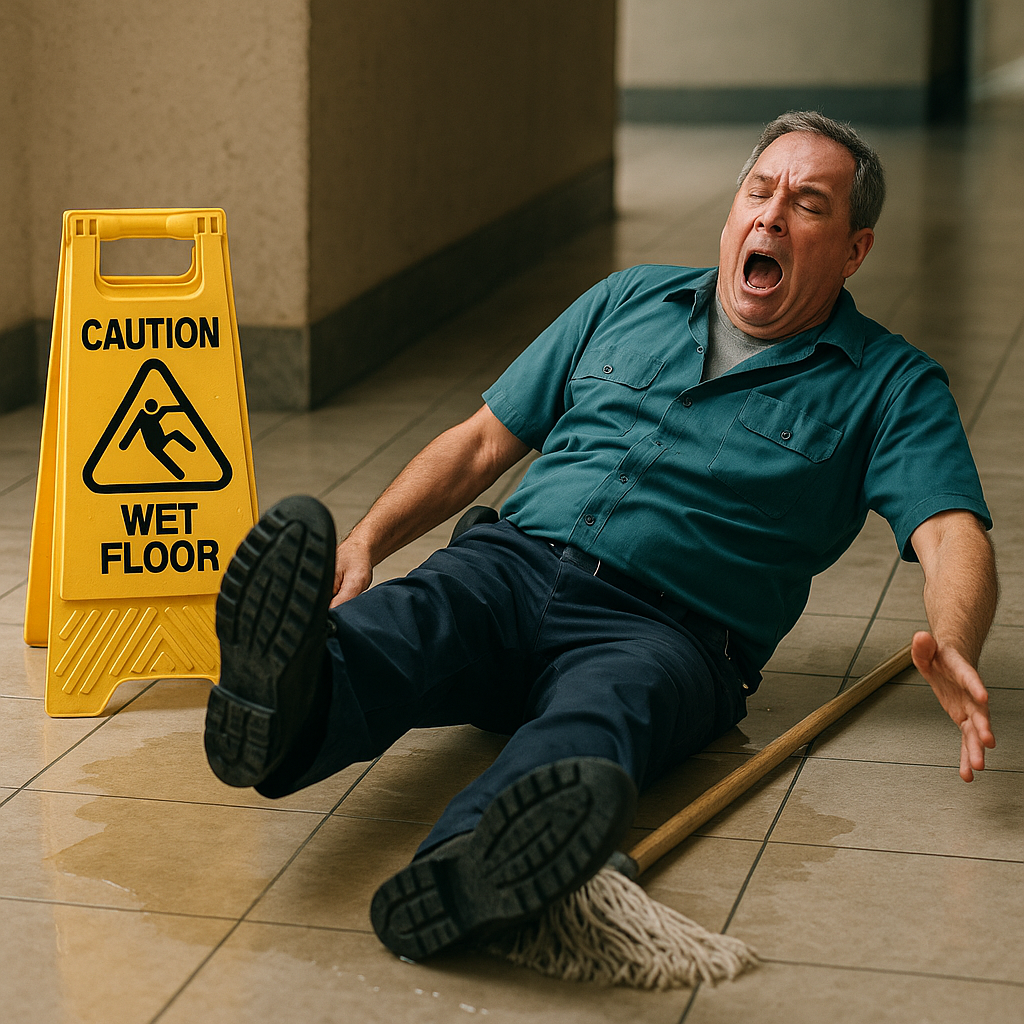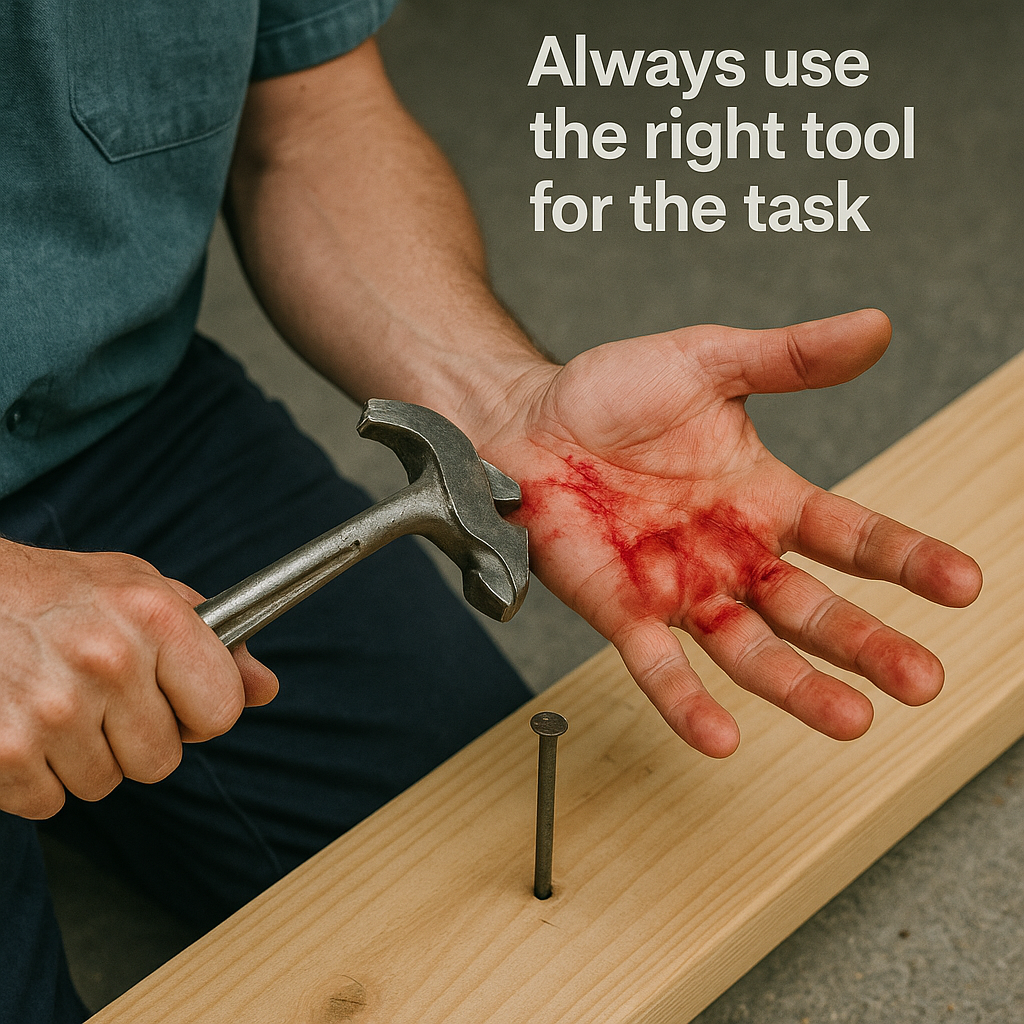Safety Moments are short, impactful stories or reminders that inspire safer behaviors and decisions in the workplace.
Starting a meeting with a relevant safety moment not only reinforces awareness but also helps employees see how safety connects to their daily tasks.

Whether you’re in construction, healthcare, manufacturing, or the office environment, these top 30 safety moments are designed to engage, inform, and ultimately protect.
- 1. The Slippery Step: Watch Your Footing
- 2. Complacency Caused the Cut
- 3. Why PPE Saved John’s Eye
- 4. Loose Clothing Near Rotating Equipment
- 5. A Forklift’s Blind Spot
- 6. The Unreported Spill
- 7. Lifting with Your Legs
- 8. The Phone Distraction
- 9. “It’s Just a Small Ladder Job”
- 10. Confined Space Misstep
- 11. Electrical Panel Blockage
- 12. Wrong Tool for the Job
- 13. Safety Glasses in Unexpected Areas
- 14. Tag Out That Machine
- 15. Mind on Task, Eyes on Path
- 16. Chemical Splash from a Poor Pour
- 17. The “Minor” Injury That Became Major
- 18. Rushing = Risk
- 19. A Culture That Encouraged Speaking Up
- 20. Why Hard Hats Matter
- 21. Glove Choice Matters
- 22. Working Alone: What’s Your Plan B?
- 23. Spot the Change
- 24. Weather Awareness
- 25. Silica Dust Danger
- 26. Heat Stress Is Silent
- 27. Never Assume Equipment Is Off
- 28. Mental Health = Safety
- 29. It’s a Shared Responsibility
- 30. Every Incident Is a Lesson
- Using Safety Moments Effectively
- Internal and External Links
- Final Thought: Keep Safety Moments Alive
1. The Slippery Step: Watch Your Footing
A janitor slipped on a wet floor despite a “Caution Wet Floor” sign being nearby. He was rushing and didn’t notice. Slow down and pay attention to signage—it’s there for a reason.
2. Complacency Caused the Cut
A worker bypassed a machine guard to save time and ended up with a severe hand injury. Safety shortcuts are always costly.
3. Why PPE Saved John’s Eye
A flying nail from a nail gun ricocheted off a wall. John’s safety glasses prevented permanent damage. Always wear your PPE, even if the task seems quick or harmless.
4. Loose Clothing Near Rotating Equipment
An apprentice’s hoodie string got caught in a drill press. A quick emergency stop saved him. Always secure loose clothing and hair.
5. A Forklift’s Blind Spot
A warehouse worker was almost struck because he assumed the driver saw him. Make eye contact with operators—never assume you’ve been seen.
6. The Unreported Spill
An unreported oil spill in a maintenance area caused a fall. Every hazard must be reported immediately to prevent others from being injured.
7. Lifting with Your Legs
Back injuries are the most common workplace strain. Share how proper lifting techniques saved someone from a long-term injury.
8. The Phone Distraction
A warehouse employee checking his phone walked into the path of a moving pallet jack. Phones and production floors don’t mix.
9. “It’s Just a Small Ladder Job”
A fall from the third rung fractured an ankle. Always inspect ladders, secure them, and maintain three points of contact.
10. Confined Space Misstep
A worker entered a confined space assuming it was ventilated. It wasn’t. Gas detection tools must be used without exception.
11. Electrical Panel Blockage
Blocked electrical panels delay response in emergencies. Clear access could be the difference between life and death.
12. Wrong Tool for the Job
A worker used a wrench as a hammer, and it broke—causing a hand injury. Always use the right tool for the task.

13. Safety Glasses in Unexpected Areas
Even non-industrial zones can have hazards. A burst pipe sent metal shavings flying—eye protection mattered.
14. Tag Out That Machine
A mechanic trusted verbal assurance that a system was off. It wasn’t. Lockout/tagout saves lives—don’t skip it.
15. Mind on Task, Eyes on Path
Thinking about weekend plans while walking through a work zone? That’s how trips and falls happen. Stay present.
16. Chemical Splash from a Poor Pour
Mixing chemicals without following the SDS guidelines resulted in skin burns. Review SDS sheets before use—every time.
17. The “Minor” Injury That Became Major
A small puncture wound was ignored and became infected. Report all injuries, no matter how small.
18. Rushing = Risk
Late for break? Skipping a checklist? Rushing increases the chance of mistakes and accidents. Prioritize safety over speed.
19. A Culture That Encouraged Speaking Up
A junior worker stopped a task due to a safety concern—and was praised. Empower everyone to raise their voice for safety.
20. Why Hard Hats Matter
A falling tool from scaffolding hit a hard hat. Without it, there would’ve been a skull fracture. No exceptions with PPE.
21. Glove Choice Matters
Not all gloves are equal. A worker wore general-purpose gloves while handling chemicals—resulting in chemical burns.
22. Working Alone: What’s Your Plan B?
A lone worker fell in a remote area and had no way to call for help. Always have communication tools or check-in procedures.
23. Spot the Change
A leaking ceiling tile turned out to be an electrical hazard. Encourage staff to report anything unusual right away.
24. Weather Awareness
An icy loading dock wasn’t salted in time. Safety moments on seasonal hazards like ice, heat, and storms are vital.

25. Silica Dust Danger
During grinding, a worker didn’t wear a respirator and developed breathing issues. Silica is deadly—don’t underestimate dust.
26. Heat Stress Is Silent
An outdoor worker ignored early signs of heat stress and collapsed. Teach workers to spot signs in themselves and others.
27. Never Assume Equipment Is Off
Lockout procedures exist because assumptions kill. Share a real story where “I thought it was off” led to tragedy.
28. Mental Health = Safety
A distracted mind can miss red flags. Promote EAPs and support resources—mental health moments matter, too.
29. It’s a Shared Responsibility
In one incident, multiple people noticed a hazard but assumed someone else would act. Speak up, act up—own safety together.
30. Every Incident Is a Lesson
End with a moment reminding workers to treat each incident as a chance to learn—not assign blame. Continuous improvement is safety’s best ally.
Using Safety Moments Effectively
To get the most from these safety moments:
- Begin team meetings or toolbox talks with one relevant to the day’s tasks.
- Ask workers for personal stories to build buy-in.
- Rotate safety champions to deliver messages for increased participation.
- Tailor moments to seasonal risks or recent incidents.
You can also link to a few toolbox talk resources from CCOHS, or get more safety moment ideas from platforms like SafetyCulture or OHSE.ca for Canadian workplace safety.
Internal and External Links
- Learn more about PPE categories in our workplace PPE guide.
- Stay up to date on evolving practices with our guide on Why Safety Drills Fail and How to Fix Them.
- Reference health and safety standards via Canadian Centre for Occupational Health and Safety (CCOHS) and WorkSafeBC.
- Use Safe Work Manitoba’s Toolbox Talk library for real-world examples.
Final Thought: Keep Safety Moments Alive
Safety Moments are more than just talking points—they’re culture builders. When used consistently and creatively, they empower teams to make safer decisions, spot risks early, and speak up without hesitation.
So whether it’s a 1-minute reminder or a 10-minute story—keep safety moments alive in your workplace.

No comments yet